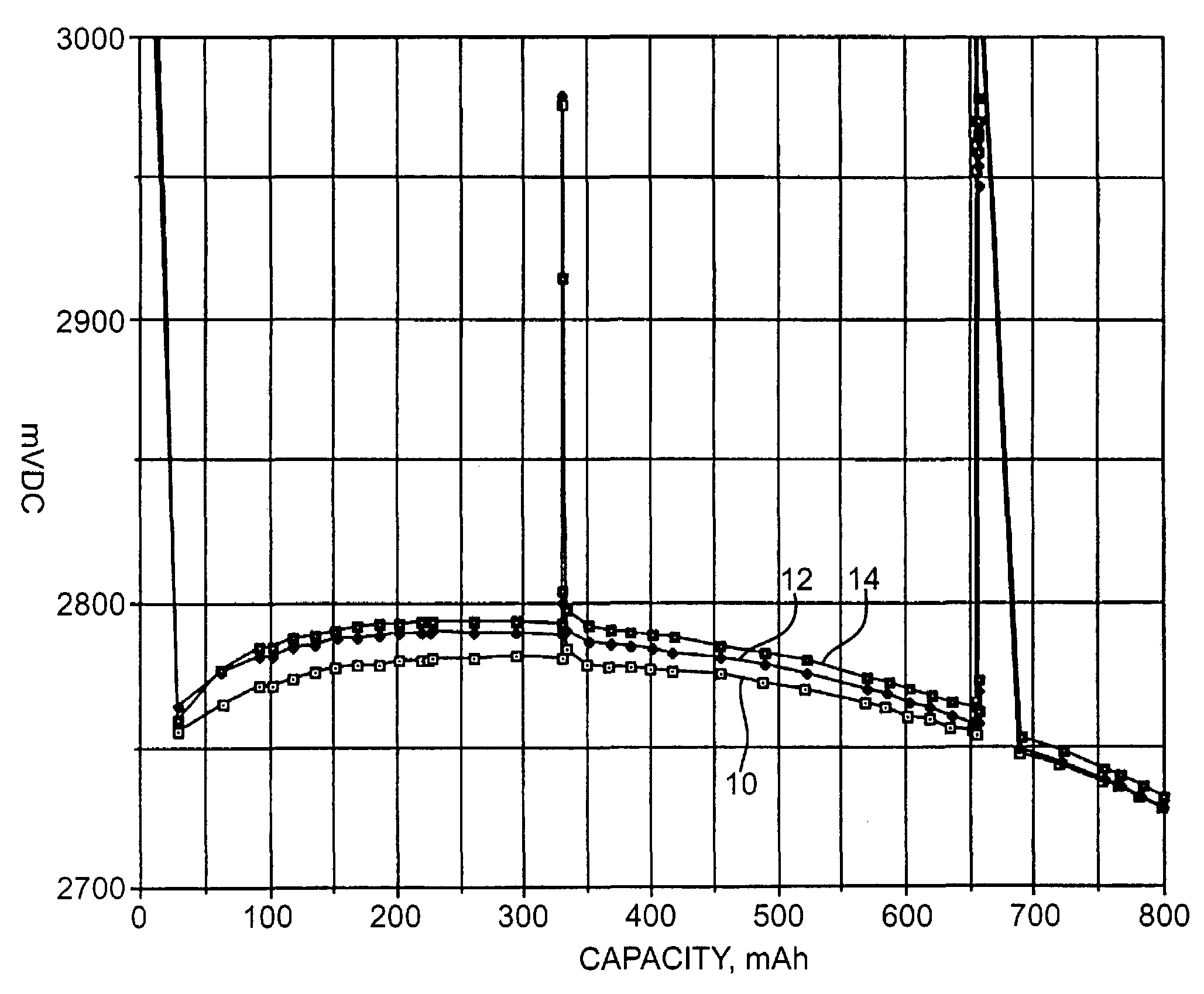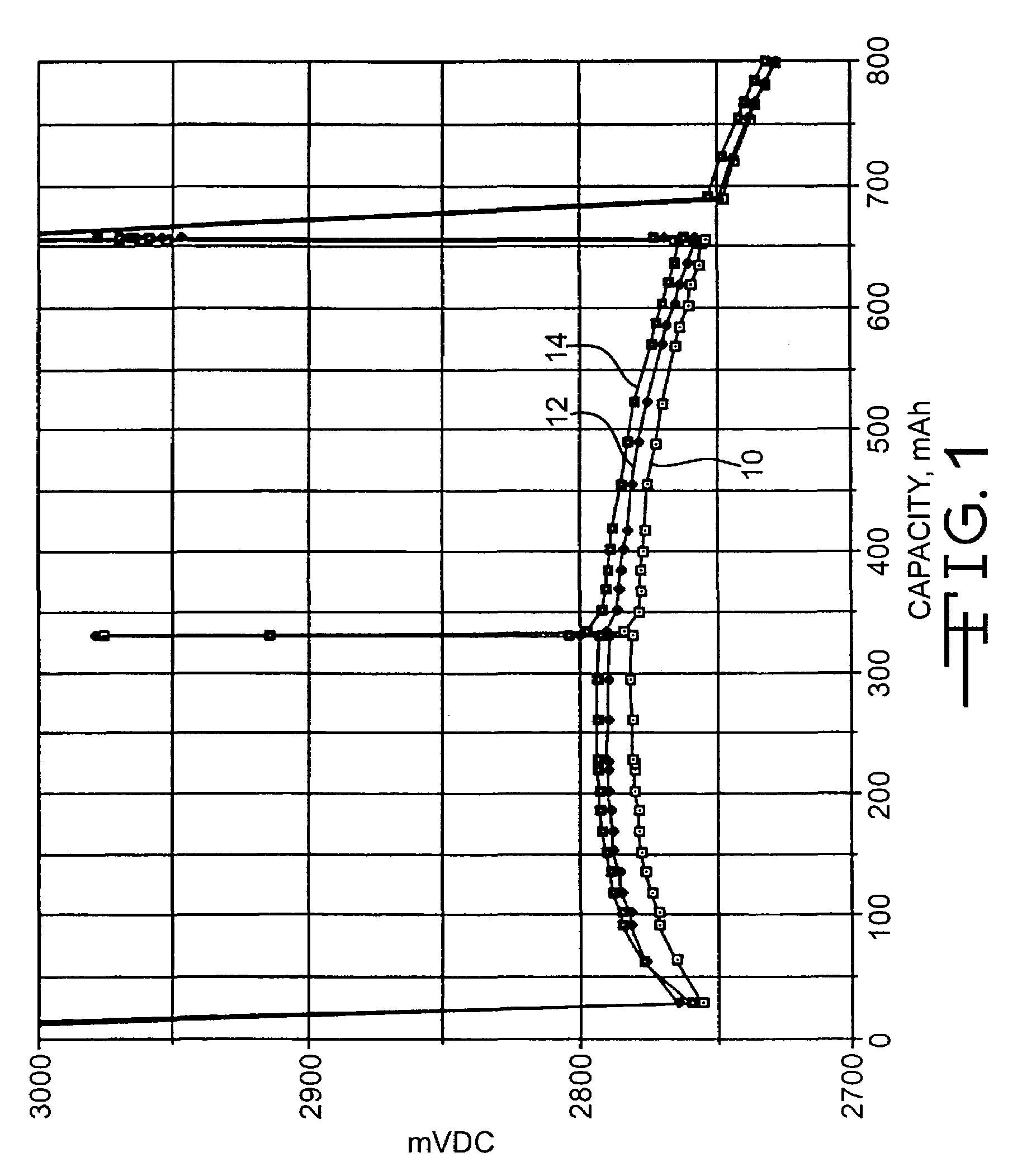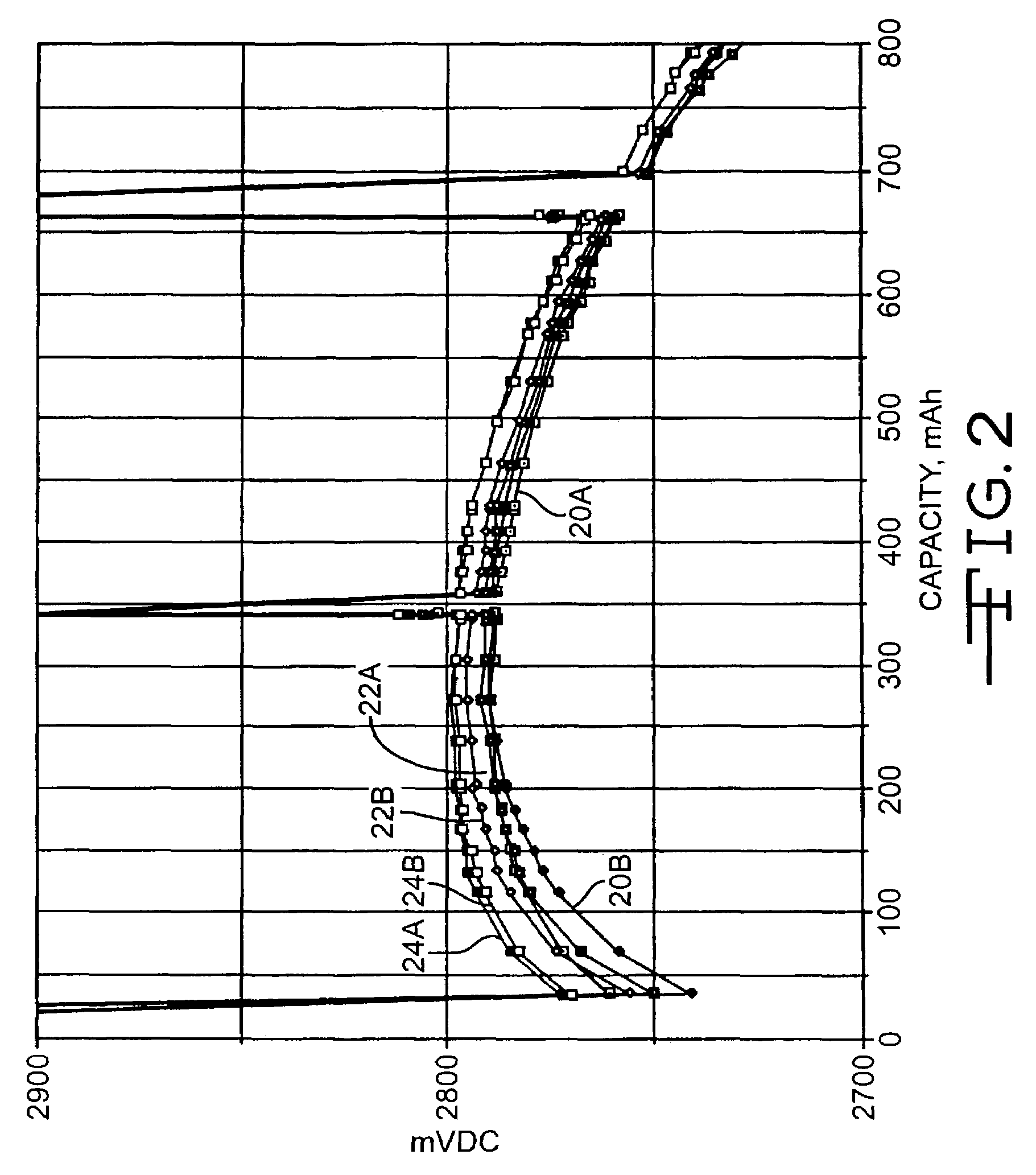Noble metals coated on titanium current collectors for use in nonaqueous Li/CFx cells
a technology of titanium current collector and noble metal, which is applied in the direction of non-aqueous electrolyte cells, primary cell maintainance/servicing, sustainable manufacturing/processing, etc., can solve the problems of reducing the integrity of welds, and achieve the effect of increasing the simplicity of the cell manufacturing process
- Summary
- Abstract
- Description
- Claims
- Application Information
AI Technical Summary
Benefits of technology
Problems solved by technology
Method used
Image
Examples
example i
[0036]Titanium screens (0.002″) thick were sputter-coated with either iridium or platinum, producing a coating of about 50 μinches. Prior art current collectors were manufactured having carbon painted on the screens. The respective screens were subsequently used as the cathode current collectors in prismatic Li / CFx test cells housed in a casing having nominal dimensions of 45 mm.×22 mm.×5 mm. (referred to as a 5 mm. Li / CFx cell). The cells were built using about 1.68 gram cathodes composed of, by weight, about 91% CFx, about 4% PTFE binder, and about 5% acetylene black. Lithium metal pressed to a titanium current collector served as the anode. The lithium A / C capacity ratio was about 1.03 to about 1.05. The electrolyte was 1 M LiBF4 in GBL present in an E / C weight ratio of at least 0.86.
[0037]Each cell was predischarged at 37° C. using a 1.5-kohm load for 9 hours. Following a one-week open circuit storage period at 37° C., the cells were subjected to a pulse train consisting of four...
example ii
[0040]Two cells of each screen type as constructed in Example I were randomly selected and placed on open circuit storage at 100° C. for 10 days. Following this storage period, the cells were placed under 2 k ohm loads and subsequently discharged and pulse tested at 37° C.
[0041]FIG. 2 illustrates the discharge results of the cells under a 2-kohm load after exposure to 10 days of open circuit storage at 100° C. In particular curves 20A and 20B were constructed from the discharge of the cells having a carbon painted cathode screen, curves 22A and 22B are of the cells having a platinum sputter coated cathode screen and curves 24A and 24B are of the cell having an iridium coated cathode screen. The spikes in the discharge curves are from an open circuit condition.
example iii
[0042]Two cells of each screen type as constructed in Example I were also placed on open circuit storage at 100° C. for 30 days. Following storage, this second cell group of was placed under a 2-kohm load-and discharged at 37° C. These cells were also periodically pulse tested.
[0043]FIG. 3 illustrates the discharge results of the cells under a 2-kohm load after 30 days of open circuit storage at 100° C. In particular, curves 30A and 30B were constructed from the discharge of the cells having a carbon painted cathode screen, curves 32A and 32B are of the cells having a platinum sputter coated cathode screen and curves 34A and 34B are of the cells having an iridium coated cathode screen. The spikes in the discharge curves are from an open circuit condition.
[0044]
TABLE 1Screen typemVWh / cc*CommentsControl-carbon27800.988No highpaintedtemperatureexposurePt sputter27900.992No highcoatedtemperatureexposureIr sputter27930.993No highcoatedtemperatureexposureControl27890.99110 days atControl2...
PUM
| Property | Measurement | Unit |
|---|---|---|
| Fraction | aaaaa | aaaaa |
| Fraction | aaaaa | aaaaa |
| Fraction | aaaaa | aaaaa |
Abstract
Description
Claims
Application Information
 Login to View More
Login to View More - R&D
- Intellectual Property
- Life Sciences
- Materials
- Tech Scout
- Unparalleled Data Quality
- Higher Quality Content
- 60% Fewer Hallucinations
Browse by: Latest US Patents, China's latest patents, Technical Efficacy Thesaurus, Application Domain, Technology Topic, Popular Technical Reports.
© 2025 PatSnap. All rights reserved.Legal|Privacy policy|Modern Slavery Act Transparency Statement|Sitemap|About US| Contact US: help@patsnap.com



